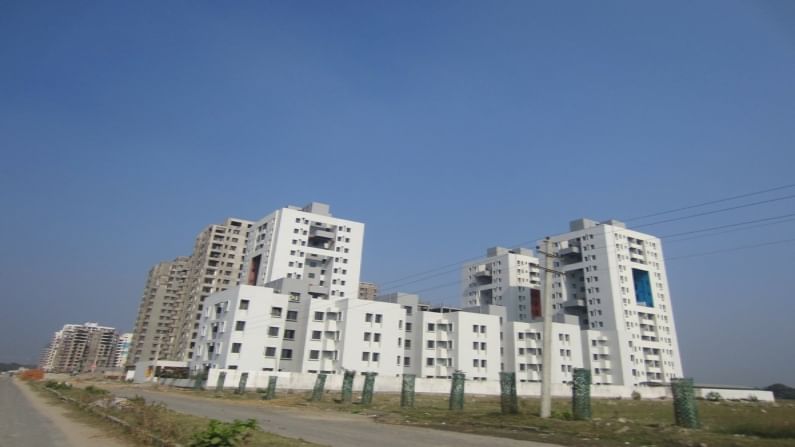Betting on Realty stocks? Here are CLSA’s top picks from the sector
Top developers aim to double their sales over the next three to four years, benefiting from strong demand, affordability and industry consolidation

After a very long-time the tide is finally turning in the favour of the bleeding real estate sector as the level of unsold housing inventory has hit a 24-month low. According to RBI’s fiscal stability report during the second half of the previous financial year, residential housing property registration and sales across major cities exceeded their pre-pandemic average levels. This was largely aided by stamp duty cuts by some states; unmet demand during the Covid-19 related restrictions and moderation in interest rates. Even realty stocks on the Dalal street buzzing as on a year-to-date basis (calendar year) the Nifty Realty index advanced 13.96% compared to a 12.5% rise in the Nifty 50.
Real estate developers are expecting a further rise in demand and are also using the opportunity to strengthen their balance sheets. “Top developers aim to double their sales over the next three to four years, benefiting from strong demand, affordability and industry consolidation. Most of them are targeting strong cash flow generation and aiming to further reduce debt levels (debt already declined by ~27% in FY21). They also aim to ramp up new project acquisitions,” said Kunal Lakhan, Investment Analyst at CLSA.
New acquisitions
The global brokerage firm CLSA is of the opinion that land prices and deal terms have not yet turned lucrative, but most developers believe that with no interest moratorium this year (for smaller developers), unlike last year, acquisition opportunities could be strong over the next 12-24 months.
Big developers like Godrej, Lodha and Mahindra plan to spend significantly on new project acquisitions over the next two to three years. On the other hand, companies like Sunteck, Prestige and Brigade will be looking at joint development or joint venture deals.
Commercial property
Most large office landlords expect vacancy levels to improve by 1-2% in the first half of the current financial year and maintain a positive long-term outlook on office demand.
“The silver lining is that occupants have started calling their employees back to offices. Embassy REIT’s management highlighted that a few of its occupants that surrendered space earlier are having second thoughts and want to come back,” noted the report.
Citing this CLSA is upbeat on developers who are focused on growth, healthy profitability and prudent capital allocation. Here are its top picks from the sector.
Sunteck Realty | Rating: Buy | Price target: Rs 425 | Upside: 38%
Sunteck Realty plans to more than double sales to Rs 2,500 crore over the next three years by launching new projects and phases in Vasai, Vasind and Naigaon in FY22. That apart the company will continue to pursue land acquisitions in MMR via an asset-light joint development approach.
It aims internal rate of return of 25% on new project acquisitions. Besides that, the company expects strong cash generation due to its ready inventory and will continue to reduce debt and borrowing cost as well. The company will even pay an upfront FSI premium in FY22 to take advantage of 50% cut in the premium rates by the state government, which will result in overall savings of Rs 250 crore on premium costs and also result in improved margins.
Prestige Estates | Rating: Buy | Price target: Rs 370 | Upside: 29%
Despite operation severely impacted in April-June 2021, the company aims to achieve pre-sales of Rs 6,500 crore in FY22 and Rs 8,000-10,000 crore over the next three to five years. It is confident of achieving 20% sales growth in FY22 driven by faster unlocking this year due to vaccinations and contribution from new high-value markets such as Mumbai starting from FY22. Proceeds from phase two of the deal with Blackstone will be received in one to two months. That will lower debt further by Rs 1,600 crore, turning it into a net cash company.
DLF | Rating: Buy | Price target: Rs 355 | Upside: 20%
DLF is confident of achieving sales guidance of Rs 4,000 crore for FY22, despite the impact of the second wave. As property prices in certain micro-markets in Gurgaon have increased by 10-30% in the past six months. DLF has hiked prices of ~20% in the second phase of its independent floors project and the market has absorbed the price hike. That apart the company is confident of reducing its debt and is also evaluating two opportunities in stressed acquisitions (NCLT cases) in NCR.
The Phoenix Mills | Rating: Buy | Price target: Rs 970 | Upside: 14%
After deals with CPPIB and GIC, it has liquidity of Rs 3,500 crore through which it has de-risked its business as these funds are adequate to fund the construction of its planned portfolio. Also, such liquidity will allow it to do new acquisitions. It is looking at new markets in north and east India. Even the cost of borrowings will come by 17 basis points to 8% in H1FY22.
However, the company has not yet renegotiated rentals with its tenants, but mostly the terms will be similar to last year or better (for Phoenix). The green shoots are available from Pune mall whose performance is in June was similar to the Jan-Feb.
(Disclaimer: The recommendations in this story are by the respective research and brokerage firm. Money9 & its management do not bear any responsibility for their investment advice. Please consult your investment advisor before investing.)